Simon Killough walks through a complex upper anterior restorative case using E.max.
Introduction
The patient presented initially with a UR1 missing, the tooth being extracted due to a failed post crown. A temporary acrylic denture allowed for socket healing. When healing was complete an Ankylos implant was placed in the UR1. A PFM bridge was already in place UR3-2.
There was an aesthetic discrepancy between the crown and bridgework on the UR3-2-1 and the natural teeth UL1-2-3. The patient requested an improvement in the appearance of the upper anterior teeth.
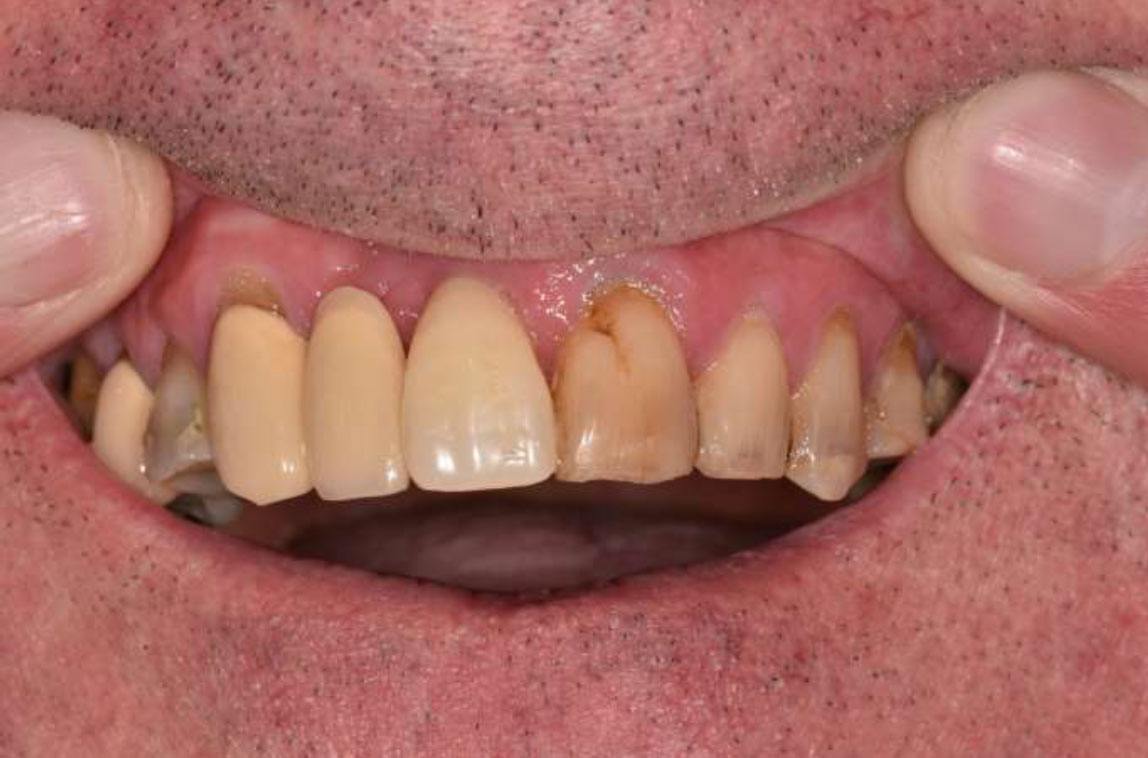
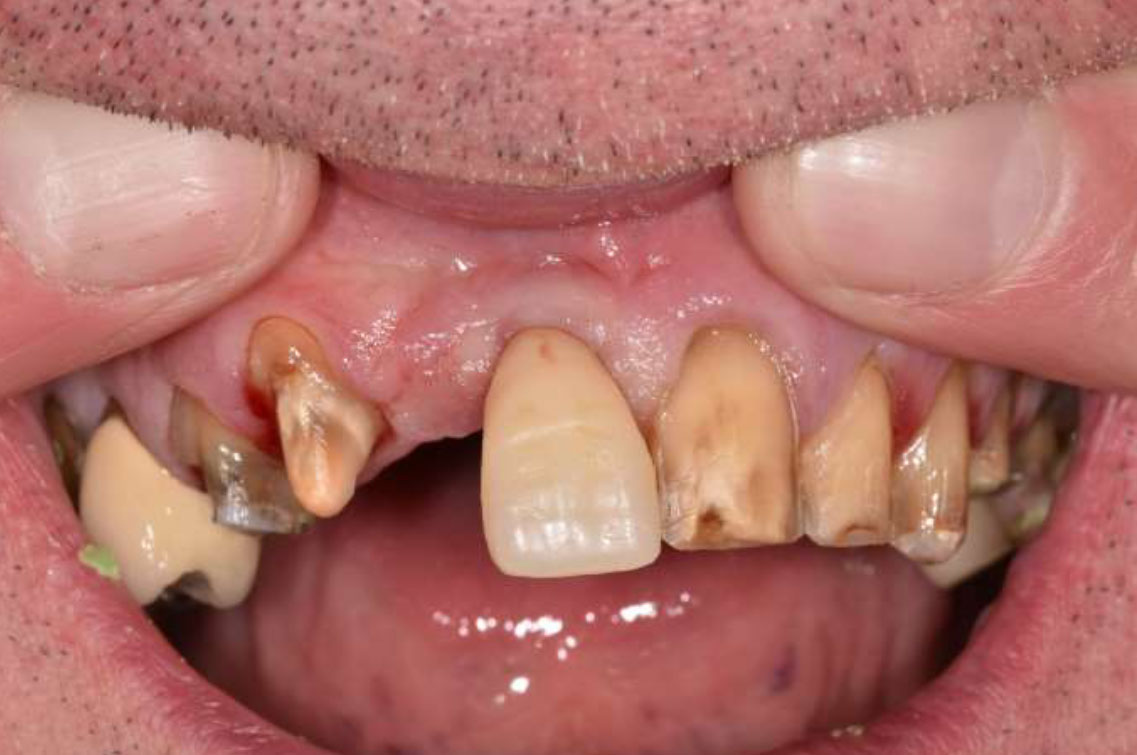
Technical detail
This was a complex upper anterior restorative case involving a combination of crowns, conventional bridgework, veneers and an implant-retained crown:
- IPS E.max crowns on the UR4, UL4-5 with the IPS E.max veneers on the UL1-2-3
- A conventional cantilever bridge, fabricated in porcelain fused to zirconia (PFZ), with the retainer on the UR3 and a pontic on the UR2
- UR1 anodised titanium Ankylos abutment with an IPS E.max implant crown (modified screw retained).
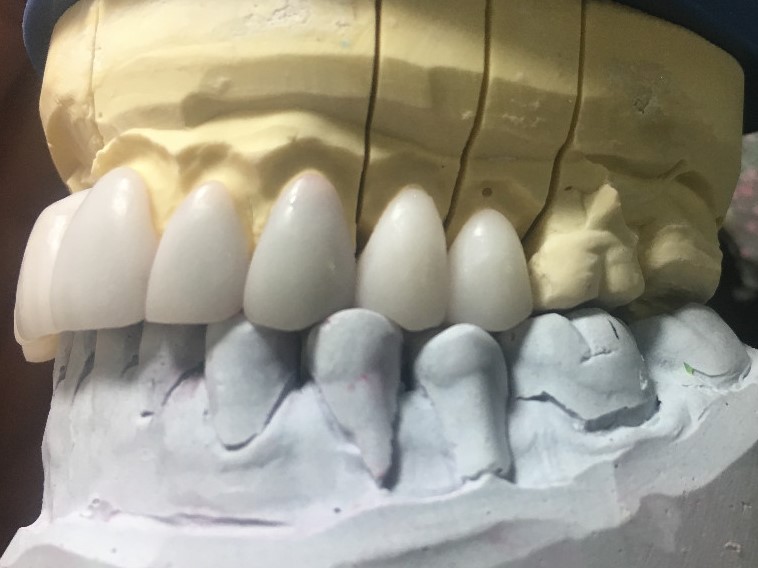
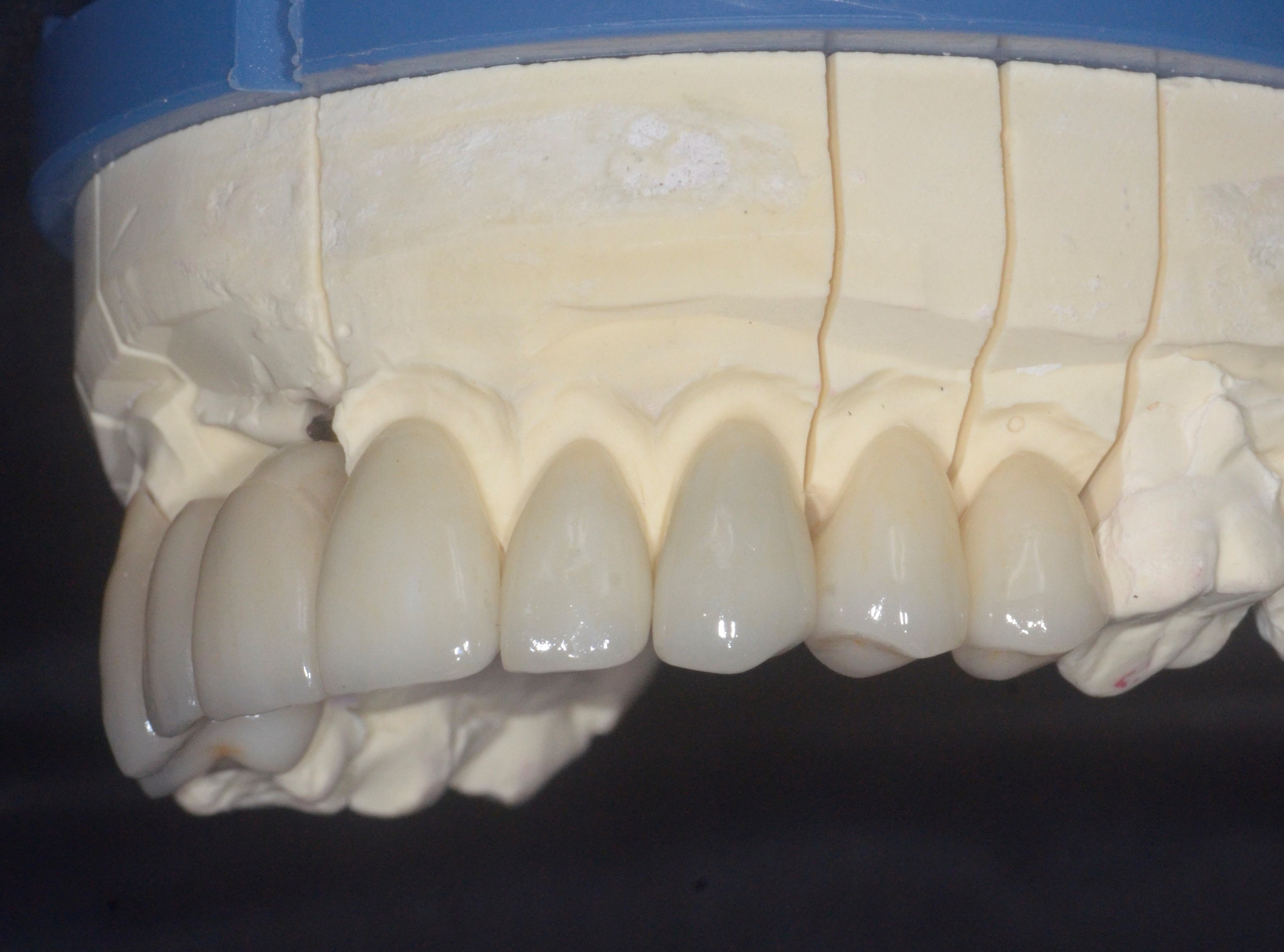
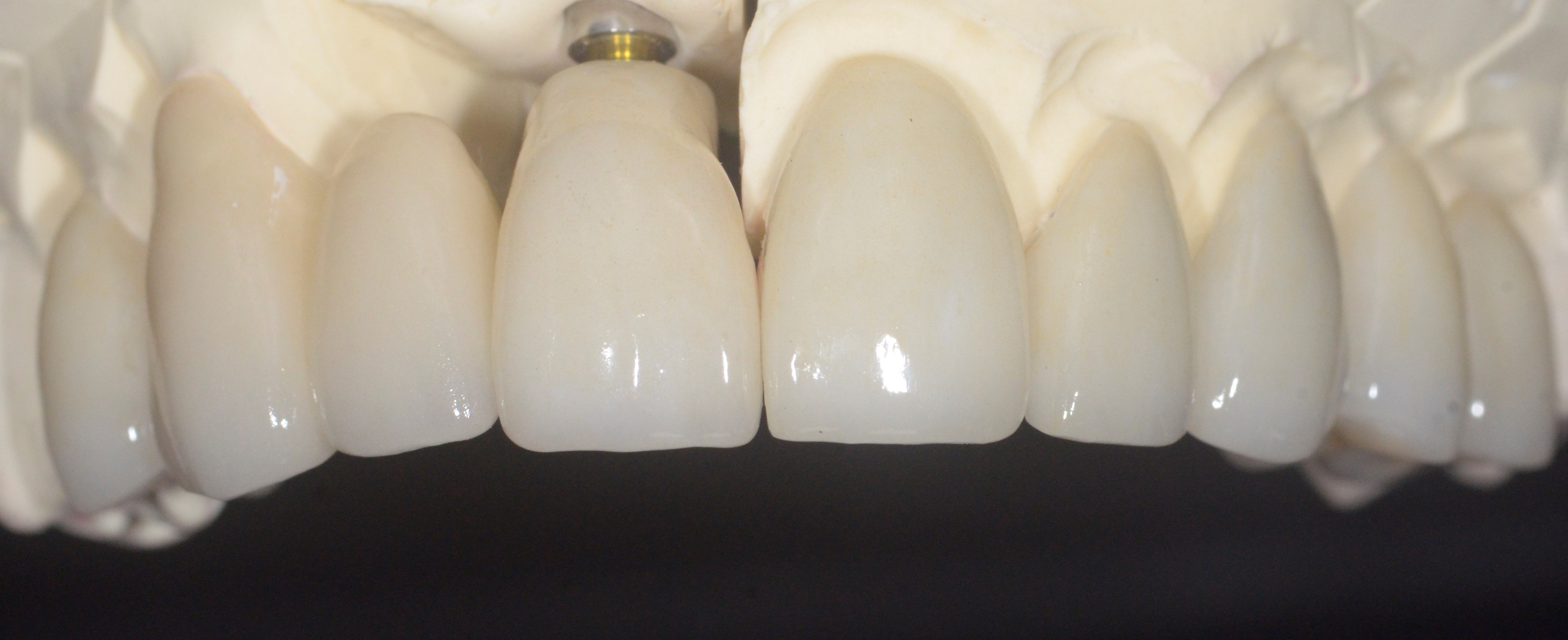
Techniques and materials used
In order to maximise the aesthetics, Dr Killough decided that it would be best to provide all ceramic restorations.
During the initial stages of implant restoration, Dr Killough provided a provisional restoration on the UR1 to ensure good soft tissue healing and to modify the soft tissue. The provisional crown was in place for a period of three months. The anodised titanium Ankylos abutment permitted the use of an IPS E.max crown. An anodised titanium abutment has a gold/yellow hue, which permits the provision of the relatively translucent IPS E.max material. If the abutment wasn’t anodised then the grey-coloured abutment could show through the translucent IPS E.max material.
The UR3-2 cantilever bridge would not have been strong enough if fabricated in IPS E.max but the use of a zirconia substructure provided sufficient strength for a cantilever design.
IPS E.max veneers allow for a conservative approach to the restoration of the UL1-2-3.
Dentist/patient feedback
The patient’s delighted with the outcome with Dr Killough commenting: ‘It’s a great result’.
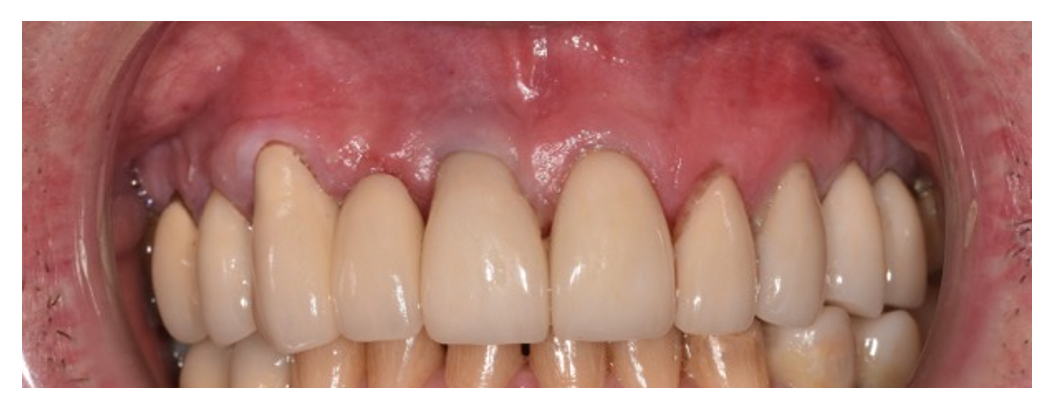
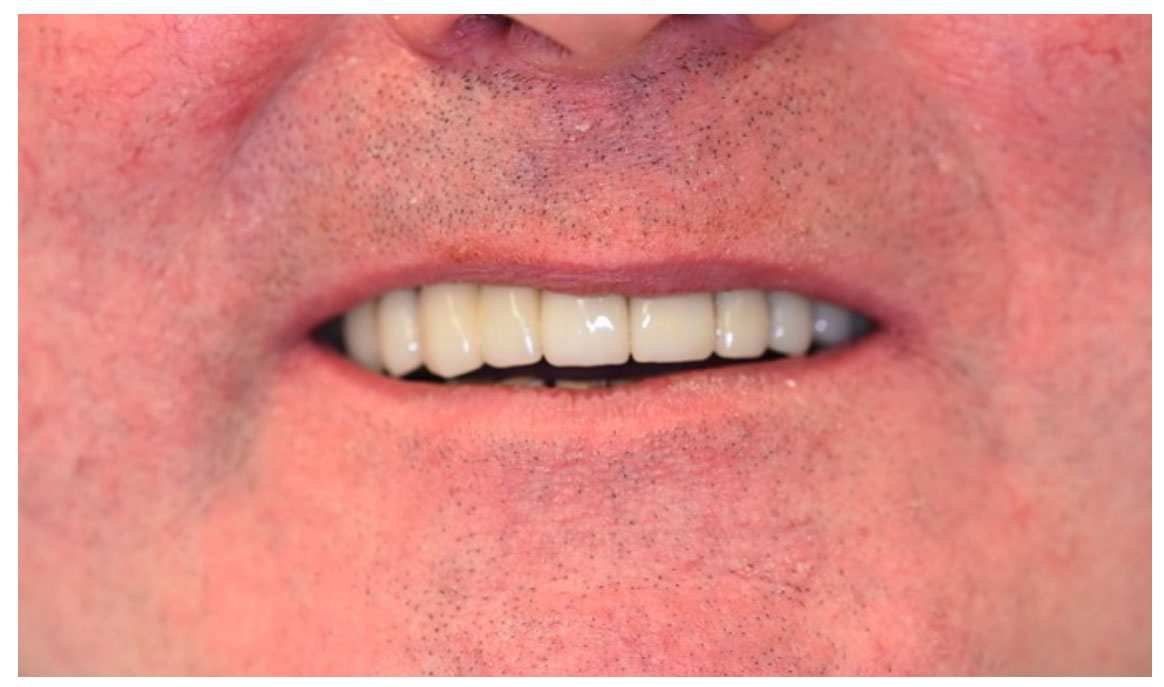
Southern Cross Dental would like to thank Dr Simon Killough for his contribution to this article.


